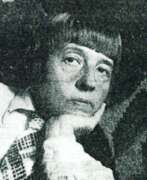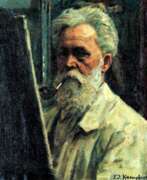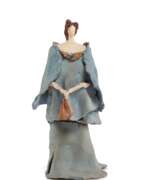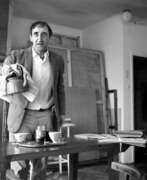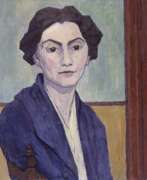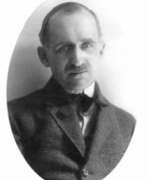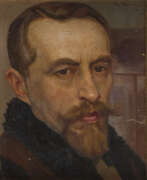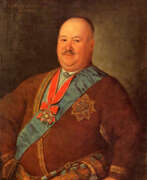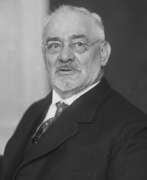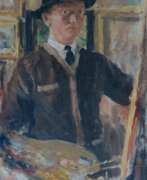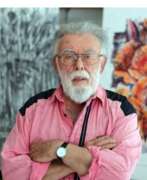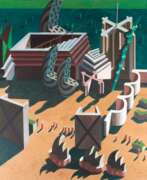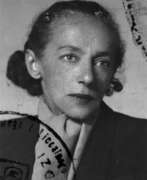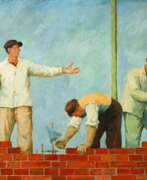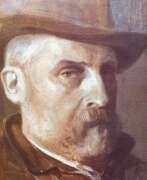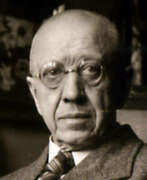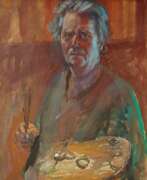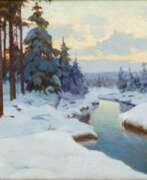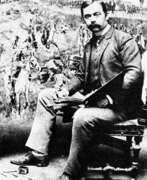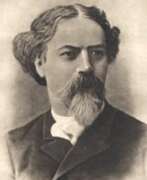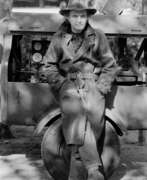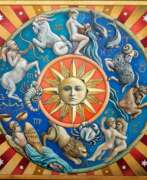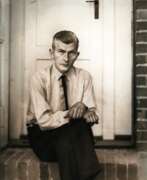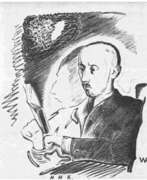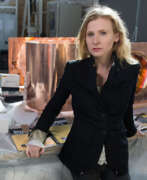Artists Poland
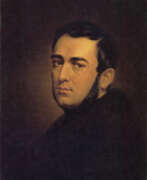

Jan Ksawery Kaniewski (Russian: Ян Ксаверий Каневский) was a Polish and Russian artist of the mid-19th century. He is known as a portrait painter.
Jan Kaniewski painted numerous portraits of members of the Russian imperial family (including Nicholas I) and the high society of the Kingdom of Poland. He also created a number of paintings on historical and religious themes.
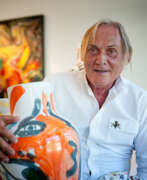

Peter Robert Keil is a German painter and sculptor.
In the beginnings of his artistic career, Peter Keil's style was influenced by German expressionism. However, his style changed visibly at the beginning of the 60s when he lived in Paris for a while and emerged in the city's nightlife. Keil increasingly parted with his realistic approach and developed a new, much more spontaneous and dynamic painting style. Since then, the use of intensive to lurid colours and the absence of realistic representation have become characteristic of his painting style. In his paintings, the colour is applied with quick brushstrokes and occasionally with impasto techniques and the images are additionally abstracted by the use of Graffiti elements. Keil prefers to paint human figures, portraits, big city scenes, landscapes and still life images of flowers. His emotional way of painting is mainly driven by a desire for freedom from social constraints and conventions. In the past 50 years, he has created numerous large- and small scale paintings in oil and mixed media on canvas but also some sculptures in wood and steel and a great number of majolicas.
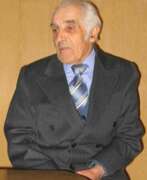

Konstantin Ivanovich Khoroshevich (Russian: Константин Иванович Хорошевич) was a Soviet and Belarusian artist of the second half of the twentieth and early twenty-first centuries. He is known as a painter who worked in the genres of landscape, portrait, still life.
Konstantin Khoroshevich during his career created more than 500 paintings, reflecting among other things significant events in the history of Belarus. In the last years of his life he worked on creating a gallery of portraits of cultural figures, his famous compatriots.
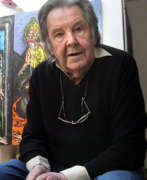

Ladislas Kijno is a French artist of Polish origin, one of the greatest abstractionists of the twentieth century.
In 1958 he moved to Paris and was accepted into the Salon de Mai committee. In Paris Kijno invented the technique of froissage - work with crumpled paper. During the same period the artist began experimenting with spray can paints, thus creating a synthesis between traditional painting techniques and modern inventions. Through the use of spray cans, Ladislas Kijno became known as one of the "spiritual fathers" of French street art.
In 1980 at the Venice Biennale Kijno exhibited 30 monumental paintings in the recognizable "crumpled" technique under the general title "Theater of Neruda".
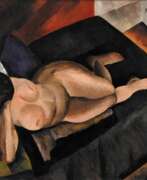

Moïse Kisling was a Polish-born French painter renowned for his contributions to modern art, particularly his highly stylized and evocative portraits. Born in Kraków in 1891, Kisling moved to Paris at the age of 19, quickly immersing himself in the vibrant artistic community of Montmartre and Montparnasse. His work, characterized by bold colors and dynamic compositions, spans a variety of themes, including landscapes, still lifes, and nudes, reflecting influences from Cubism and Post-Impressionism.
Kisling's artistry is celebrated for its unique blend of realism and abstraction, marked by a fluid, colorful style that evolved from his early influences, including Cezanne and Cubism. He was a central figure in the School of Paris, engaging with contemporaries such as Pablo Picasso, Georges Braque, and Amedeo Modigliani, the latter of whom he shared a close friendship and mutual artistic admiration. Modigliani's portraits of Kisling underscore their deep personal and professional bond. Notable works by Kisling include "La Sieste à Saint-Tropez," "Portrait du peintre (Autoportrait)," and "Le pêcheur," showcasing his versatility and skill in capturing the essence of his subjects.
During World War II, Kisling's Jewish heritage forced him to flee to the United States, where he continued to exhibit his work in New York City and California before returning to France after the war. His legacy is preserved in numerous public collections, including the Metropolitan Museum of Art, the National Gallery of Art, and the Brooklyn Museum, among others. This wide recognition attests to his significant impact on the development of modern art.
For collectors and experts in art and antiques, Kisling's work represents a pivotal intersection of cultural and artistic movements of the early 20th century. His paintings are not only visually stunning but also historically significant, embodying the spirit of an era marked by innovation and experimentation. The Musée du Petit Palais in Geneva holds a large collection of his works, offering a comprehensive overview of his artistic journey.
We invite enthusiasts and collectors to stay updated on new discoveries, sales, and auction events related to Moïse Kisling's work. Subscribing to updates ensures you won't miss the opportunity to engage with the rich legacy of this remarkable artist. This subscription is a gateway to exploring the vibrant world of Kisling's art, from his captivating portraits to his lush landscapes and still lifes, all of which continue to enchant and inspire.


Paul Kleinschmidt was a German painter, graphic artist, engraver, and draftsman.
He studied at the Berlin Academy and at the Academy in Munich, where he studied the techniques of lithography and etching. Kleinschmidt created many etchings and lithographs in the modernist style and is also known for genre images of people having fun in restaurants.


Carl Friedrich August von Kloeber was a German painter of the first half of the 19th century. He is known as a painter and teacher, a member of the Berlin Academy of Arts.
August Kloeber preferred to use motifs from mythology in his works, which distinguished him from many German artists of the time. He also created paintings on religious and historical subjects. He also painted portraits, and his models included members of Beethoven's family. Kloeber received commissions from the Prussian royal family and worked on the painting of castles, churches, and other sites. He also designed porcelain, jewelry, and medals.
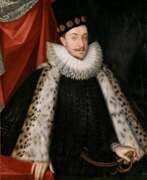

Martin Kober was a Polish painter of the second half of the 16th century of German origin. He is known as a court portrait painter, the founder of this genre in Poland.
Kober was a court painter who worked with various monarchs of Central Europe, including the Holy Roman Emperor, Polish kings and queens Stephen Bathory, Rudolf II, Anna Jagiellonka, and Sigismund III Vasa. Kober was the first artist in Poland to specialize in formal portraiture. His work had a significant influence on royal iconography and played an important role in the development of Polish portraiture. Kober was also an important representative of the early Baroque and his style found many imitators.


Ernst Karl Eugen Koerner was a German painter of the last third of the nineteenth and early twentieth centuries. He is known as a painter, landscape painter and marinist.
Koerner received his art education in Berlin, after which he traveled extensively, depicting the areas he visited with oil paints and watercolors. The period from 1873 to 1886 was particularly productive for the artist, when he made numerous visits to Egypt and the Middle East. His most popular paintings depict Egyptian architecture, often against a backdrop of vivid picturesque sunsets.
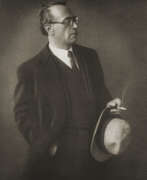

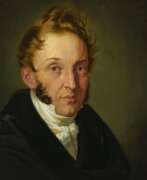

Aleksander Kokular was a Polish painter of the first half of the twentieth century. He is known as a painter and teacher, a representative of late classicism.
Aleksander Kokular was best known in the portrait genre. Models for his paintings were, in particular, the Russian Emperor Nicholas I, major Russian dignitaries, representatives of the Polish intelligentsia, the bourgeoisie and the clergy. The artist also painted pictures on historical, mythological and religious subjects.
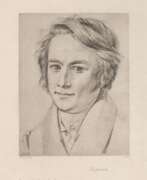

August Kopisch was a German painter of the first half of the 19th century. He is known as a landscape painter and poet.
Kopisch began his path in art with painting, but switched to literature due to a hand injury. He studied at art academies in Dresden, Prague and Vienna. His paintings were characterized by bright colors. There are 23 known paintings by Kopisch, but some of them have not survived. One of his most notable masterpieces is the 1848 painting Pontic Moorlands at Sunset.
As a poet, Kopisch also left his mark on German literature and art. He notably translated Dante's Divine Comedy and Italian folk songs into German.
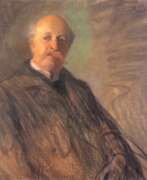

Juliusz Fortunat Kossak was an Austrian Polish historical painter and master illustrator who specialized in battle scenes, military portraits and horses. He was the progenitor of an artistic family that spanned four generations, father of painter Wojciech Kossak and grandfather of painter Jerzy Kossak.


Nikifor Krynicki, born as Epifaniy Drovnyak, was a Lemko naïve painter. Nikifor painted over 40,000 pictures – on sheets of paper, pages of notebooks, cigarette cartons, and even on scraps of paper glued together. The topics of his art include self-portraits and panoramas of Krynica, with its spas and Orthodox and Catholic churches. Underestimated for most of his life, in his late days he became famous as a naïve painter.
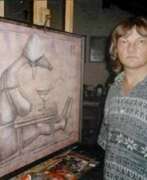

Ryszard Krynski is a Polish fantasy painter with contemporary themes.
He paints in the painstaking technique of glaze painting. Each picture of the artist surprises in his own way, conducting a dialogue between the past and the present, reality with a joke.
Ryszard Krynski has exhibited his works at numerous collective and individual exhibitions in Poland and abroad. He is a member of the Association of Polish Artists and Designers.
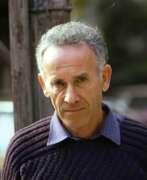

Moshe Kupferman (Hebrew: משה קופפרמן) was an Israeli painter known for his abstract, minimalist works. He was a major figure in Israeli art, and his work was recognized internationally.
Kupferman emigrated to Israel in 1945. He studied at the Bezalel Academy of Art and Design in Jerusalem and later in Paris. Kupferman's early works were influenced by the European modernist tradition, but he later developed a unique style that was characterized by minimalism and simplicity.
Kupferman's paintings often featured a limited palette of colors and simple geometric shapes arranged in a grid-like structure. He believed that his art should express a sense of spiritual calm and balance and sought to create works that were both visually striking and meditative.
Kupferman's work was exhibited extensively in Israel and around the world, and he received numerous awards and honors throughout his career. He was also a teacher and mentor to many younger Israeli artists.
Kupferman's legacy as one of Israel's leading abstract painters continues to influence contemporary Israeli art today.
